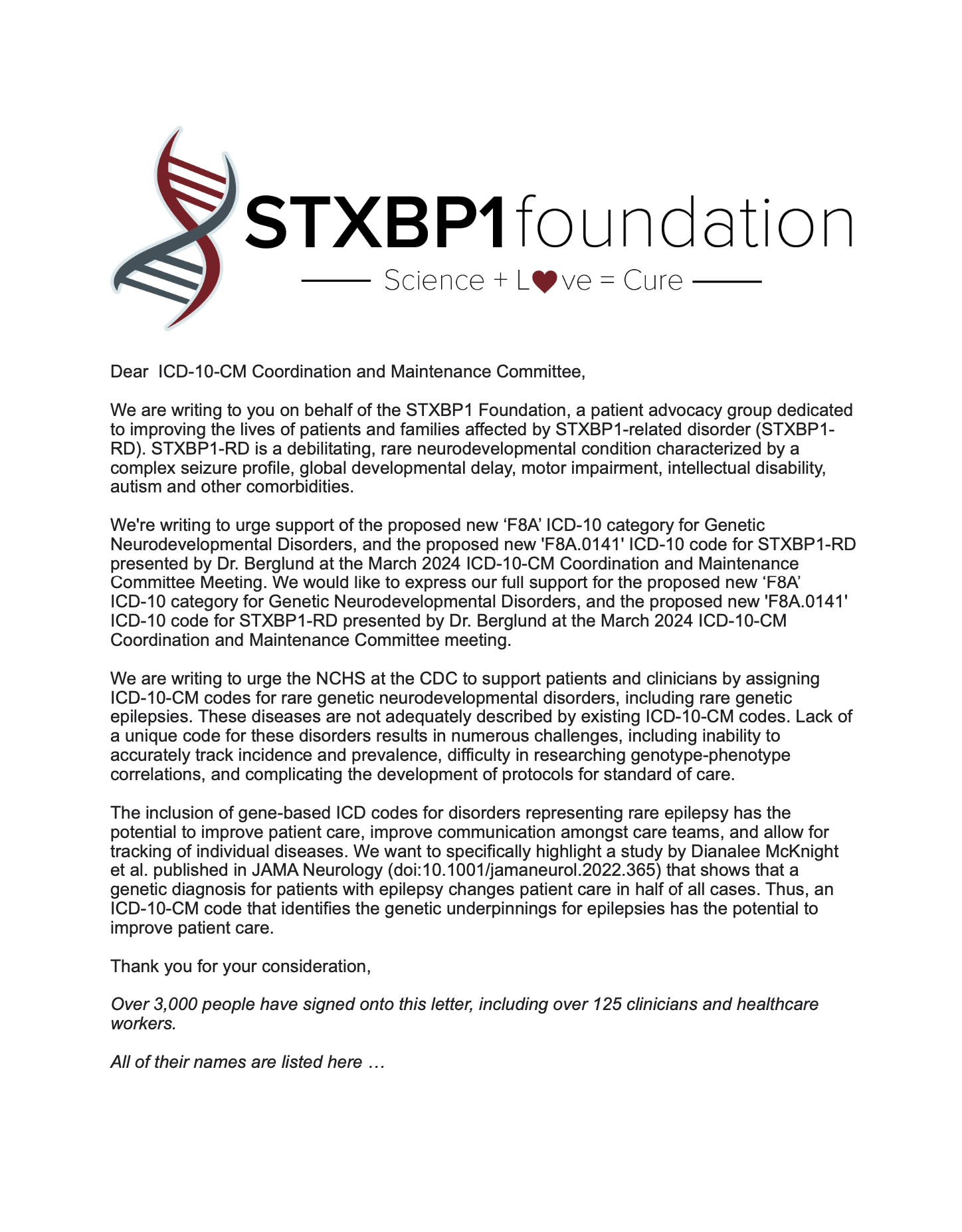Over 3,000 People Have Signed our Petition to the CDC for an ICD-10 Code
Petitioning the CDC
On behalf of our community, the STXBP1 Foundation requested an ICD-10 code for STXBP1 in 2021, and we have not yet been granted a code! An ICD-10 code will support better care for our patients today, and also help us to improve the care our patients receive in the future.
The Centers for Disease Control and Prevention (CDC) manages the ICD-10 codes, and have been hesitant to issue codes for rare diseases. This is especially frustrating given there are more than 10 codes for being bitten by a shark, and there is even an awards list for bizarre ICD-10 codes ... Sucked into jet engine, subsequent encounter (V97.33XD), and Hurt at the Opera (Y92253) have ICD-10 codes ... STXBP1 deserves an ICD-10 code!
What is an ICD-10 Code?
An ICD-10 code is an internationally accepted diagnostic code used to describe and track a disease within a population. The CDC reviews new and revised codes twice a year and assigns new disease codes every October.
Why does it matter?
ICD-10 codes are used by clinicians every time they see a patient. They are now stored in the patient’s electronic medical records (EMRs), enabling a patient’s health information to be more easily shared between clinicians and health care settings. For rare Developmental Epileptic Encephalopathies (DEEs), having an ICD-10 code enables us to identify patients with these diseases more quickly. The data we can gather from having ICD-10 codes will bolster research, help us identify patients for clinical trials, and enable us to standardize protocols for care.
What can we do?
The CDC has not provided a workable solution for hundreds of genetic-based neurodevelopmental disorders to obtain ICD-10 codes. In response to the growing concern from patient advocacy communities, Dr. David Berglund from the CDC made a revised proposal for a new hierarchy of codes for genetic neurodevelopmental disorders at the March 2024 ICD-10 Coordination and Maintenance Committee Meeting.
What we did
We needed to rally, and fill the CDC's inbox with letters and names supporting Dr. Berglund's proposal by May 17, 2023. And, our community delivered with over 3,000 people signing onto our letter, including over 125 clinicians and healthcare workers.

